Starfish are always a brilliant addition to your aquarium; however, you should not just simply buy a starfish without being experienced, and without possessing the knowledge and understanding required to look after these majestic tankmates.
All starfish require an established tank, they also have an intolerance to changes in salinity, water temperature, and pH. Also, copper-based treatments that are effectively used to treat your fish for diseases, will react terribly with starfish and can even cause fatalities!
Most starfish that are considered to be "reef safe", can act in a predatory manner towards small shrimp, clams, and even beautiful anemones, which act as the home for many different types of fish and algae. So, in reality, the adopted label of "reef safe", should be taken with a pinch of salt!
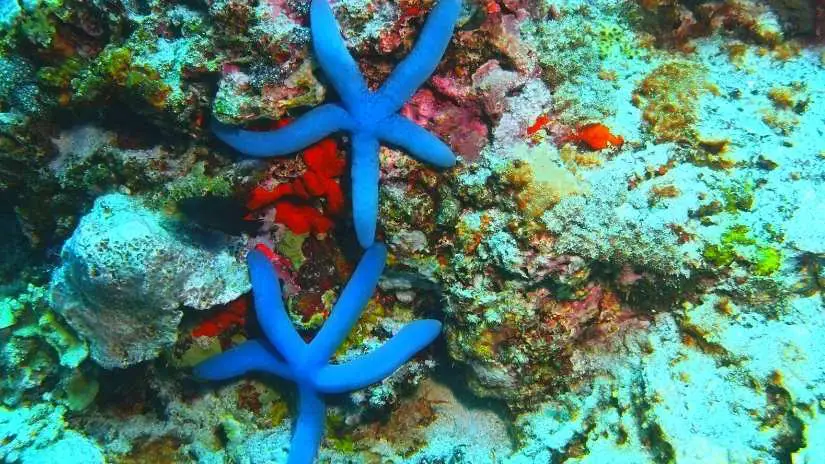
Species of starfish come in abundance, which is why it is incredibly important to research the specific starfish you want to join the rest of the marine life residing in your aquarium, ensuring that you can care for your desired starfish adequately, and to provide correctly for these majestic marine invertebrates.
Starfish, unfortunately, do not tend to do too well in captivity, and additional feeding is commonly required. So, if you qualify for ownership of a starfish and feel confident you know how to take care of them, it only makes sense to check out our list of the top 5 reef safe starfish.
5. Red Linckia Starfish
At number 5, we have one of the most popular starfish to grace hobbyist tanks, the Red Linckia. As you might have guessed, this starfish has a beautiful red color, sharp and bright, paired with a peaceful and kind temperament, making it an attractive prospect for any tank keeper.
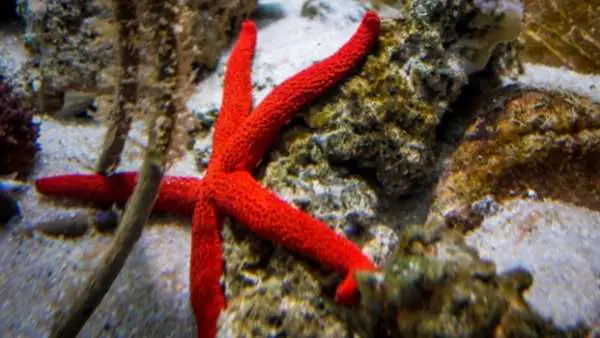
They are also an incredibly active species too, so you will likely see these critters operating both throughout the day and night. They feed primarily off microorganisms and detritus, which can be obtained with relative ease.
Despite the many redeeming qualities these starfish possess, they are incredibly hard to feed, and it is no easy task ensuring your tank is ready for these saltwater starfish to inhabit.
4. Sand Sifting Starfish
These starfish aren't necessarily the most eye-catching due to bright and vibrant colors being displayed. As far as starfish go, the Sand Sifting species are more vanilla in terms of their color. However, if you take a closer look, you can see patterns of stripes, spikes, and dots emerge, which makes them certainly more unique to look at than at first glance.
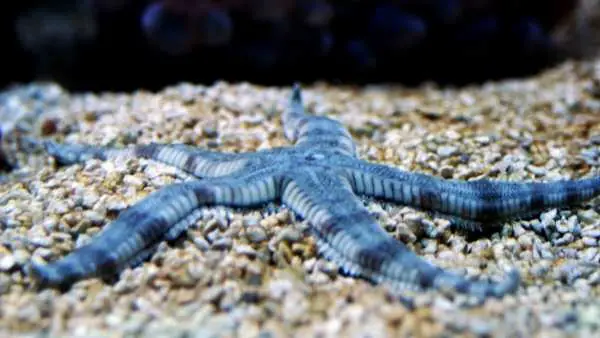
These starfish are known to be more predatory than most others, due to them having a reputation for eating other starfish, as well as shrimp, mollusks, and even sea urchins. Although, their main diet consists of detritus, which can be found in the sand bed and in the rockwork.
Sand Sifting Starfish will make an awesome addition to your saltwater aquarium; however, ownership will require patience and experience. Upon being put into your tank, they tend to eat any detritus left in the aquarium, so you need to make sure your tank is clean before introducing them otherwise they might just end up burying themselves in the sand bed and die then decay. For certain, these are a difficult starfish to keep and preserve, but they will accept substitute feeding, making your life a little easier. Just make sure to always keep your tank clean providing optimal conditions for these marine invertebrates.
3. Serpent Starfish
Substitute feeding is made a lot easier with the next starfish to enter the list. The Serpent Starfish is a carnivore and has a diet mainly consisting of small pieces of chopped meat, shrimp, mussels, or fish.
Another thing to note is that these unique starfish are nocturnal feeders, so avoid trying to feed them in the daytime, do so before going to bed at night.
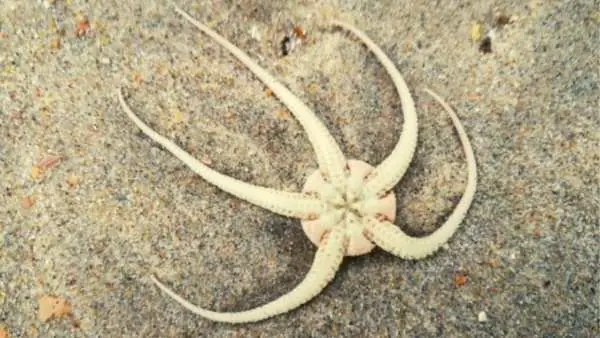
The awesome Serpent stars come in a multitude of different colors, the red ones are considered "reef safe", however, it is ill-advised to purchase green Serpents due to their slightly more aggressive nature, you don't want to see some of your tankmates going missing overnight!
These charismatic little stars can grow up to 1 foot (12 inches) in diameter, so, naturally, they will require a larger saltwater tank.
Unless green in color, these starfish are considered to be a peaceful species in the aquarium and tend to spend the majority of the day hiding away and resting due to their nocturnal feeding nature.
Despite only really feeding at night, over time, they can adapt and learn to be active throughout the day and rest at night.
2. Fromia Starfish
Fromia Starfish come in many different shapes sizes and colors. Many of the various types of these stars are considered to be reef safe. Here are the other types that are equally as beautiful and reef safe; Marbled Fromia, Black Tip Fromia & Red Fromia. The most common being the Black Tip Fromia.
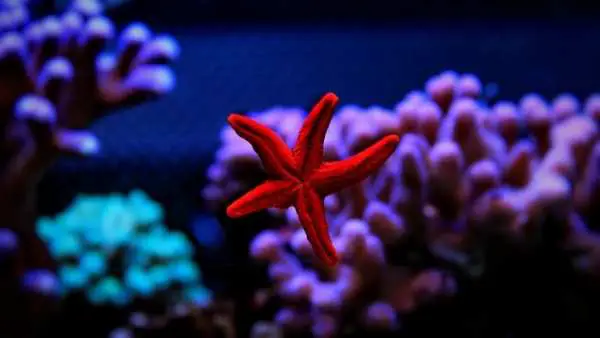
They all have a classic star fish shape with their own unique colors and patterns, making for a bright addition to your aquarium. Passive by nature, and active throughout both the day and night make for the perfect starfish addition!
Their diet mainly consists of detritus and films, however, they have also been known to accept substitute feeding of flakes, meats, and nori.
1. Brittle Starfish
Do not let the name fool you, there is nothing brittle about these magnificent little creatures. Like the Fromia, there are many types of Brittle Starfish that could have featured in this list, appearing in all different shapes, sizes, and colors: Red, Yellow, Banded, Fancy, and knobby are just a handful of examples.
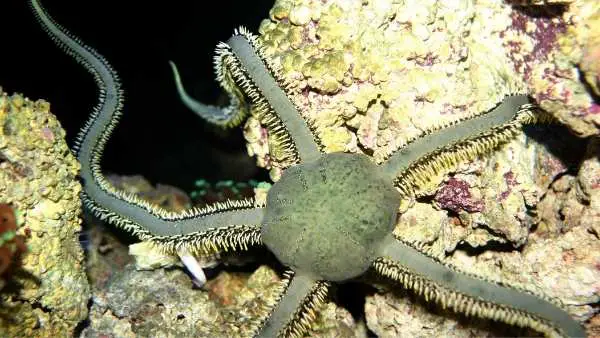
For hobbyists, Brittle Stars are the most commonly kept starfish. They will require substitute feeding but are very well-natured and are considered to be one of the easiest species to keep.
Although these stars have a good reputation among the community, there are some definite no no's. For example, some types of Brittle stars are considered to be "not reef safe." For instance, Green Brittle Starfish should not be purchased, so make sure to do some extensive research into the specific one you would like to make sure it is appropriate for the environment you are planning to put it in.
Much like the Serpent Stars in their appearance, the way in which you can tell the difference between the two species is with their texture. Brittle Starfish are covered in spines/spikes, whereas Serpent Starfish are smooth.
If you want to learn more about brittle stars, make sure you check out our brittle star hitchhiker guide, dedicated to all things brittle stars!
Reef Safe Starfish Conclusion
In conclusion, the star fish on this list will certainly add to the excitement of any reef aquarium, and with their own unique colors, shapes, and personalities, any of these would be a perfect new addition. There are other great options that have perhaps been left out of this list, however, these are the best starfish to accompany reefs and are a majorly beneficial to have in any reef aquarium.

